In certain places, ice climbers face the challenge of searching intensively for the perfect conditions and racing against time before the ice disappears. However, there exists a magical location where frozen waterfalls maintain their pristine beauty for months on end.
Enter Ian Welsted, a distinguished ice climber and winner of the prestigious Piolet d’Or award. After assessing ice conditions in Scotland alongside Tim Miller and exploring Nepal with Vinayak Malla, Welsted now beckons us to one of the world’s premier climbing destinations. As a seasoned ice climbing guide throughout the winter, he generously shares insider tips for navigating the icy wonders of the Canadian Rockies, specifically along the captivating Icefields Parkway.
Formerly a resident of Canmore, Welsted has now made his home just beyond the provincial border in the enchanting Golden, B.C. Golden proves to be a hidden gem, offering an exceptional ice and mixed climbing experience, especially during dynamic and stormy spells like the one gracing this week.
Thrilling Cold Adventures in Canada
Canada stands out as the ultimate haven for ice climbers seeking extensive vertical routes, a reputation only possibly challenged by Norway. Beyond the awe-inspiring landscapes, the Canadian Rockies boast an unmistakable element—bitter cold.
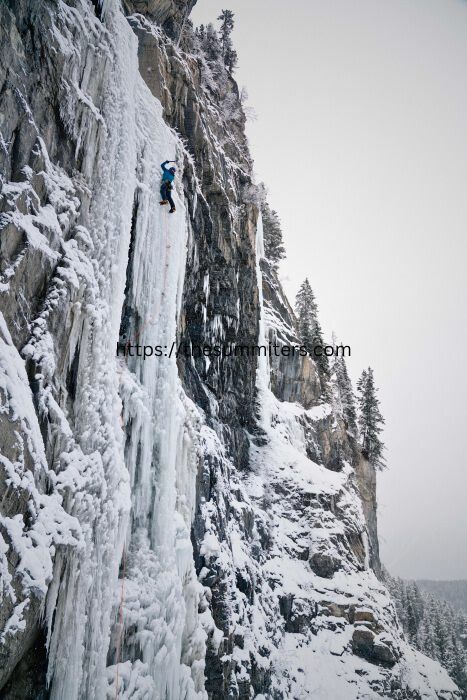
Welsted points out that the chill in the Canadian Rockies surpasses that of the U.S. mountains. However, for those intrepid ice climbers willing to weather the frosty conditions, a splendid reward awaits. The ice remains steadfast and dependable for weeks, encompassing an impressively lengthy season stretching from October to April.
“This is what truly distinguishes Canada,” Welsted emphasizes. “Ice can start taking shape as early as October, and you’ll discover climbable ice until typically the second week of April.”
People often opt for January and February because, during these months, the assurance of finding ice is close to 100%. There’s hardly ever a year without ice in these months, Welsted revealed. “Yet, I have to admit, these are not my favored months due to the biting cold and the brevity of daylight hours.”
Expansive Wilderness and Epic Adventures
The grand scale of the Canadian Rockies offers an abundance of opportunities for ice climbing, a fact that Welsted underscores. It’s not surprising when you consider that this area is as vast as Switzerland and Austria combined. However, the vastness also means that you might find yourself embarking on four or five-hour drives from one incredible climbing spot to the next. So it’s a tactical move to plan your climbing destinations in advance.
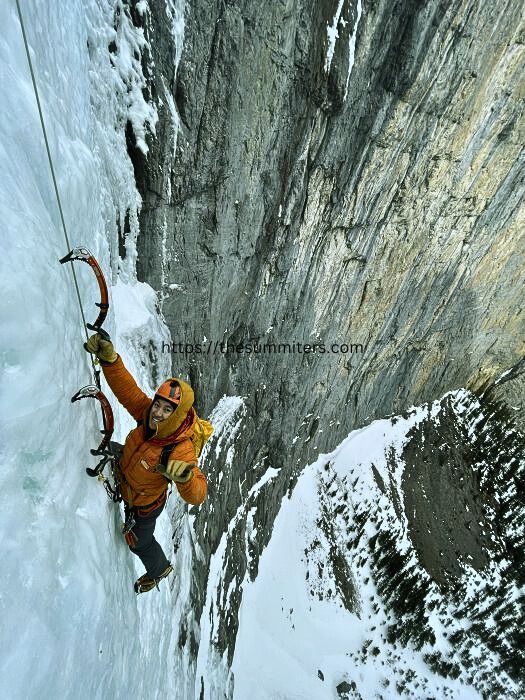
For those contemplating a visit, having your own wheels is highly advisable unless you’re lucky enough to have friends willing to play chauffeur. Public transit to ice climbing areas in Canada is pretty much a no-go. Unlike places like Chamonix, where buses, trains, and lifts can take you almost anywhere, Canada’s ice climbing spots require a bit more logistical planning and personal transportation.
Top Ice Spots for Cool Climbing
When heading to the Canadian Rockies for some ice climbing action, most climbers choose to fly into Calgary, on the eastern side of the mountains. From there, they often make their way to vibrant towns like Banff or Canmore. These spots not only offer a lively atmosphere but also a variety of ice climbing routes with different lengths and difficulty levels. To reach the ice, it’s usually a short car ride followed by a walk, ranging from a quick 10-minute jaunt to a more substantial hour-long trek. Banff, situated by the scenic Bow River, boasts ice climbing routes along canyon walls and high cliffs that provide stunning views of the valley.
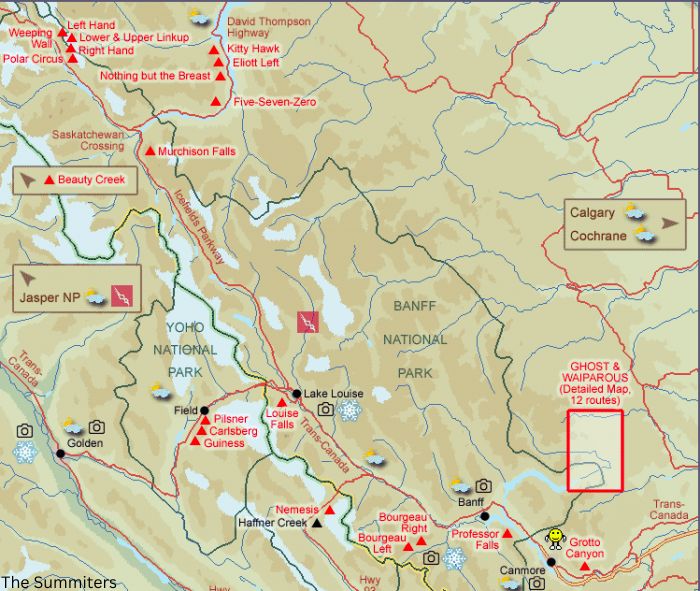
However, here’s the deal – the closer you get to these towns, the busier the ice climbing spots become, as Welsted wisely notes. His advice? Go west.” If you drive an hour north of Canmore, you’ll hit Lake Louise. Better yet, taking Welsted’s suggestion to heart, head to the Rampart Creek Hostel for a more secluded experience that’s still right in the heart of the ice climbing action.
The Rampart Creek Hostel stands out as the only one that remains open throughout the winter. Nestled along the Icefields Parkway, a scenic mountain road stretching from Lake Louise to Jasper, it’s an off-the-beaten-path gem. As Welsted explains, although it’s a highway, it’s not a bustling one with big trucks. Generally well-maintained during the winter, it might close during significant storms. Nevertheless, it offers a tranquil yet well-positioned haven for ice climbers seeking a unique winter adventure.
Prepare yourself for an extraordinary adventure in the Icefields Parkway renowned as one of the world’s most awe inspiring and wild roads. Here’s the trade-off – don’t expect any places to stay, dine, or refuel for several hours of driving. But what you gain in return is truly magnificent – think glaciers, deep valleys, sharp peaks, and some of the most iconic ice-climbing spots in all of Canada. This is the terrain where treasures like the Weeping Wall and the coveted Polar Circus await your discovery.
Welsted shared insights, saying, “Some of my clients, accustomed to tackling easily accessible routes near towns like Ouray in Colorado, are taken aback by what they describe as a ‘truly alpine’ climbing experience with a more extended approach in pure wilderness.”
Imagine this: the Weeping Wall, just a 10-minute stroll from the road, opens up to at least 30 multi-pitch ice routes. In that same enchanting area, mythical spots like Curtain Call and Ice Nine await your exploration. As Welsted enthusiastically puts it, “You can spend a whole week in the hostel, exploring different routes each day.” It’s an invitation to immerse yourself in the beauty and challenges of authentic alpine ice climbing, a journey that promises not just climbing, but an unforgettable wilderness experience.
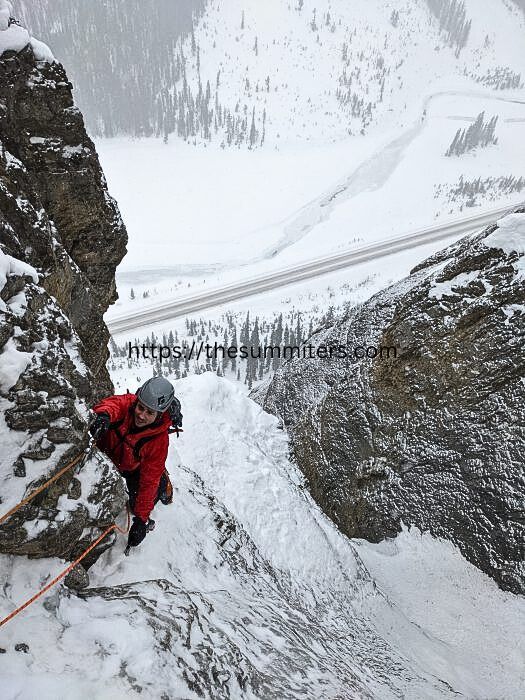
Avoiding the Hustle and Bustle
For those who seeking for a more serene experience Jasper is the perfect escape from the crowds.
To get there you can catch a flight to Edmonton and then embark on a four-hour drive. It’s worth noting though that the journey might not be as visually striking as the one from Banff. This detail is particularly relevant for those stepping into their first Canadian winter where the initial impression matters.
Venturing to the west side of the Rockies, already within the beautiful British Columbia, you’ll discover ideal base locations like Field, nestled inside Yoho National Park. This quaint spot is conveniently close to renowned climbs such as Guinness Gully, Pilsener Pillar, Carlsberg, or Superbock, not to mention the charming town of Golden. It’s a quieter and picturesque alternative for those looking to immerse themselves in the natural wonders of the Canadian Rockies.
For Experienced Climbers
If you are just starting out in the climbing world it might be best to steer clear of this challenging terrain. While there are a couple of spots around Canmore where you can dip your toes into top-roping that’s not the highlight for winter climbers in this area.
Now, when it comes to the Icefields Parkway, we’re talking about a whole different ball game. This stretch is renowned for its demanding mixed climbing, involving techniques like dry tooling up to M7 and navigating tricky overhanging ice sections. This is the real deal, attracting some of the most seasoned climbers such as Jeff Mercier and Greg Boswell.
One fascinating aspect here is the endurance of these conditions. Unlike in Europe, where such conditions are fleeting, once the ice sets in here, the routes remain in prime condition for many rewarding weeks.
But, don’t let that frighten you. Yes there are numerous challenging routes that will put your skills to the test, but there’s also a variety catering to different difficulty levels. Take the Weeping Wall, for instance. Some routes kick off with WI5 pitches, and then the difficulty amps up to WI6. So, whether you’re seeking a moderate climb or ready to push your limits, the options abound, as highlighted by Welsted. It’s a climbing haven with something to offer for climbers of every caliber.
Beware of Avalanches
When you’re embarking on ice climbing in the Rockies, it’s like entering the wild during the harshest winter conditions. One significant threat looms large – avalanches. They pose a genuine danger, especially on many exposed routes. Unfortunately, tragic incidents have unfolded in renowned spots like Polar Circus. Welsted emphasizes the importance of being proactive: “You absolutely have to check the weather and snow forecast in advance. For detailed weather information refer to Avalanche.CA.
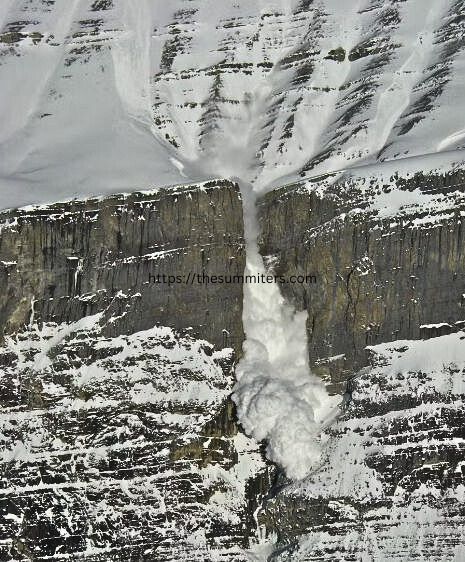
The climber’s community still grieves the Death of David Lama Hansjorg Auer, and Jess Roskelley who met their destiny in an avalanche while climbing Howse Peak of the Icefields Parkway.
“Avalanche risk peaks, particularly in January and February,” cautions Westeld. Climbers like Nick Bullock and Greg Boswell, who are regulars in the Canadian Rockies, often schedule their visits for early November when the avalanche risk is comparatively lower. However, an early start translates to longer approaches, and the ice may be situated higher up.
In times of hazardous avalanche conditions, Ghost Valley, east of the Rockies near Calgary, becomes a favored spot for local climbers. It boasts an abundance of ice with minimal avalanche risk.
However, reaching the ice in Ghost Valley involves off-road driving in winter conditions, presenting a significant challenge. While some find the journey itself to be part of the adventure, Welsted holds a differing opinion: “If I’m going ice-climbing, I want to spend the day ice-climbing, not dealing with another adventure like off-road driving.” It’s a reminder that safety considerations are paramount in the unpredictable and challenging world of ice climbing.
Climbing Style and Courtesies
Let’s talk about the climbing scene here, which sets itself apart from many other places around the globe. You’ll notice something different – bolts are a common sight on mixed climbing routes.
Welsted dives into the reasoning: “Bolting is prevalent, and there’s a solid reason for it. The rock here, it’s no secret, is quite tricky; it’s limestone, but it’s notably fractured, likely due to the temperature fluctuations.” Locals humorously dub the Rockies as “the Rottenies” because of the rock conditions.
Now, when you’re looking to tackle those ice climbing routes, there aren’t strict access restrictions, but you’ll need a national parks pass and should play by the park rules. Overall, the atmosphere is easygoing. However, with a growing number of enthusiasts heading for the popular routes, overcrowding is emerging as a concern.
“Ice climbing is gaining traction in Canada, drawing more visitors,” observes Welsted. Especially for our friends from the U.S., it seems like the season is shrinking, prompting them to flock here.
Adding to the mix are the European climbers on the rise. “They’re accustomed to bustling spots and might use tactics that locals find a bit unconventional. For instance, they might climb beneath another team on the same route or swiftly overtake slower teams.”
As Welsted elucidates, what might feel like a packed scenario for Canadians is business as usual for European climbers who are used to vibrant places like Chamonix.
There are routes where it’s relatively safe to start beneath another team because the ice surface is extensive,” he elaborates. “Yet, it’s not the standard practice here. With the growing number of climbing pairs, it’s evolving into a significant challenge. It’s a reminder that climbing customs vary, and fostering mutual respect on the ice becomes paramount as this captivating sport gains popularity amidst the breathtaking Canadian landscapes.
Tackling the Information Gap
Here’s the challenge – getting your hands on detailed information can be a bit of a puzzle. According to Welsted, there’s a noticeable absence of a guidebook for ice climbing in the Canadian Rockies, and the go-to guide everyone used is no longer in circulation.
There’s an attempt to modernize the information scene. Will Gadd has taken charge of the guidebook’s rights and transformed it into an app. However, there’s a little hiccup – it doesn’t play nice with Welsted’s Android phone. As far as he knows, it seems tailored exclusively for Apple phones. The joys of technology!
Fret not; the internet steps in as a reliable ally, supplemented by some lively Facebook groups. But, here’s a piece of advice from Welsted – approach online information with caution; not everything on the net is a gem. On a positive note, Canadians are generally warm and welcoming. If you reach out to local climbers, you’ll often find a wealth of advice and insights waiting for you. It’s a reminder that sometimes the most valuable information comes directly from those who intimately know the ins and outs of these icy landscapes.
Venturing into the Frosty Realm
In our conversation, Welsted delved into the captivating world of ice climbing, whether it’s intertwined with mountaineering pursuits or stands alone as a passionate endeavor.
His climbing journey initially stemmed from a desire to conquer mountains. Ice climbing entered the scene later, with Welsted learning the essential techniques in the alpine playground of Chamonix. He then made his way to Canmore, where winter activities revolve around the challenging realms of ice climbing and dry tooling. The initial motivation behind his foray into ice climbing was to equip himself with the skills required for ascending formidable peaks like Denali.
As he reflected, Welsted realized that during winter, opting for ice climbing was a more feasible endeavor compared to attempting mountain ascents in the frigid conditions. The landscape unfolded before him with an abundance of steep ice formations, dominating the vistas in every direction. In those early days, he found himself embracing the thrill of scaling icy surfaces for a hundred days in a season. It’s a testament to the magnetic allure and practical accessibility of ice climbing in the enchanting winter landscape he explored.
Source: ExplorersWeb